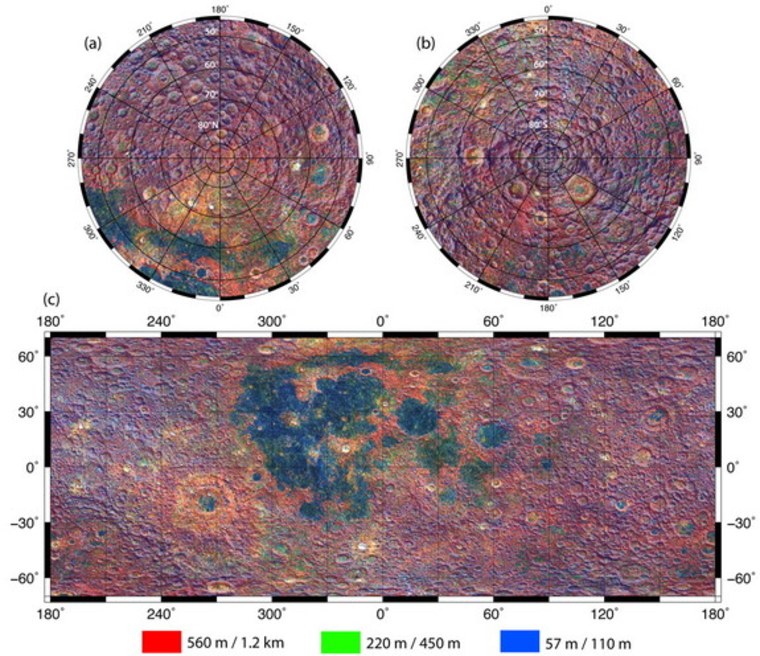The first comprehensive set of maps of the slopes and craters on the lunar surface is revealing clues about the violent history of the moon.
Unlike on Earth, where wind and water frequently erode geological features, the moon's landscape is less volatile. Features from hundreds of millions, or even billions, of years ago are still visible.
Using the Lunar Orbiter Laser Altimeter (LOLA) on NASA's Lunar Reconnaissance Orbiter, scientists have developed a detailed map of the changes in the contours of the moon from pole to pole. Studying the roughness of these features reveals more about their age and their formation. [ See the new moon map here ]
Some events are sudden, such as the craters that formed when comets and asteroids crashed into the moon. Mapping the surface provides clues to the ages of the impact sites. The edges of older craters changed as more and more space rocks bombarded them, while newer ones have a sharper, more defined rim.
Other processes occurred gradually. The dark, smoother parts of the moon, known as maria, formed by volcanism.
"As maria age, they change in their roughness properties," researcher Oded Aharonson of California Institute of Technology told Space.com. Newer lava flows are smoother than their older counterparts. Aharonson and his colleagues, led by Margaret Rosenburg, also of Caltech, detailed their findings in a paper published in the Journal of Geophysical Research.
Even landslides can reveal activity from the lunar past. Moonquakes and impacts from large objects can cause loose material to slide downhill, or even break off part of a cliff. Examining the steepness of the rubble pile can give clues about the event that shifted it.
In addition to revealing hints about the lunar past, such detailed topography data can help locate potential sites for ice by revealing shaded, stable regions where water is likely to freeze.
The moon isn't the only place such a detailed examination can come in handy. Other celestial bodies have received similar mapping, though none with quite as much detail as LOLA provides.
Mars, Earth, Venus and Saturn's moon, Titan, have all received some degree of examination, and the Mercury Laser Altimeter is currently scanning the planet closest to the sun. As long as the terrain isn't liquid or gas, it could provide valuable data.
"Understanding the surface roughness properties would be an interesting pursuit for any object with a solid surface in the solar system," Aharonson said.
Follow SPACE.com for the latest in space science and exploration news on Twitter @Spacedotcom and on Facebook.
